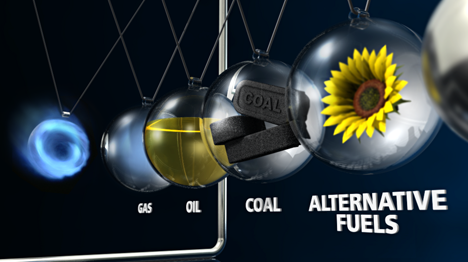SAACKE energy efficiency

The main points
- Significant increase in fuel efficiency factor
- Exact analysis and individual form for each measure to increase efficiency
- Improved plant control response
- For all burners, control systems and heat generators
- Short amortization times
- All components have a long service life
Minimizing loss and fully utilizing fuel
All losses from a firing plant place additional stress on both the budget and the environment. Their extent is often underestimated. In many cases it consumes well over 10% of all fuel that is used. In these cases even small changes to burners, boilers or control systems can significantly increase the efficiency of the combustion system. Whatever modernization measures are used, SAACKE offers extensive solutions for analyzing each firing plant and modernization modules for each detail related to burners and heat generators.
The range of possible improvements begins with retrofitting an electronic burner control system. Compared to mechanical compound regulation, it allows for individual control of air and fuel flows. That reduces fuel consumption and improves control response. This control system also provides the perfect basis for using additional measures such as speed control, O2 and CO control, feed water and continuous blow-out control.
Speed control reduces the fan speed for the lower firing rates, thereby lowering the power consumption of the fan motor significantly.
An electronic burner control system allows for additional control circuits: Since air excess inevitably leads to loss, use of an O2/CO control system is worthwhile. This control system measures the actual composition of the flue gas with a probe and optimizes combustion with minimized consumption.
Feed water control and continuous blow-out control serve much the same purpose – they determine actual parameters in operation and make it possible for the burner control system to reduce continuous blow-out losses considerably.
If flue gas temperatures downstream from the heat generator are very elevated, heat exchangers can be used. They remove valuable heat energy from the flue gas and heat up process water, feed water or combustion air, etc. Calorific value technology refers to the heat exchanger cooling off the flue gas beyond the dew point. This makes it possible to utilize the energy of the flue gas up to the limits of what is physically feasible.
Because the effect of modernization depends greatly on the control response of the relevant plant, however, the plant must first be analyzed. The seavis efficiency monitor acts in this case as an unerring instrument for recording relevant operating data and precisely calculating all improvement measures: This makes it possible to predict accurately which modernization modules will be effective and how quickly retrofitting measures will pay for themselves. It's interesting that these amortization times are usually very short, which often begs the question why modernization measures were not taken sooner.